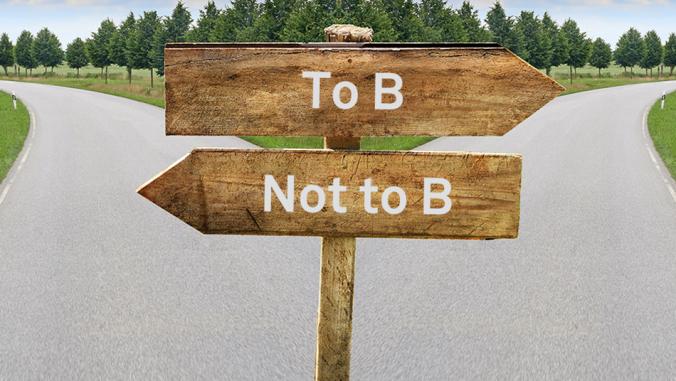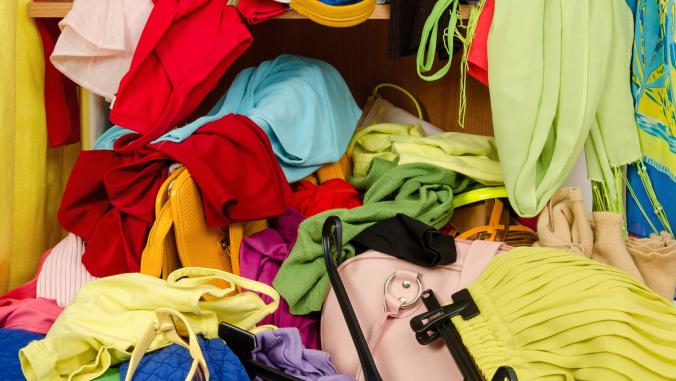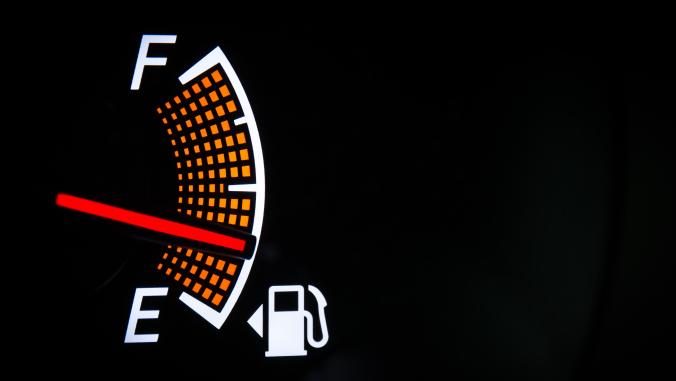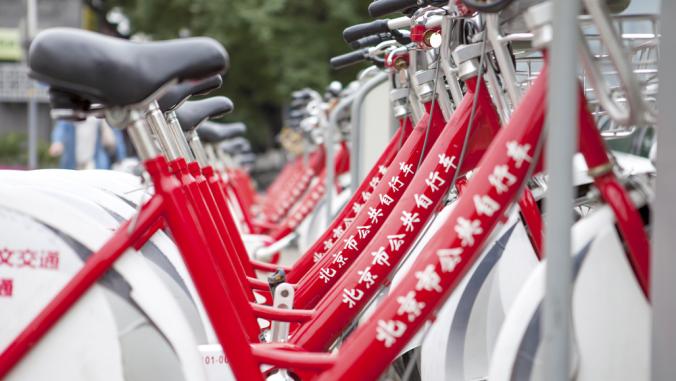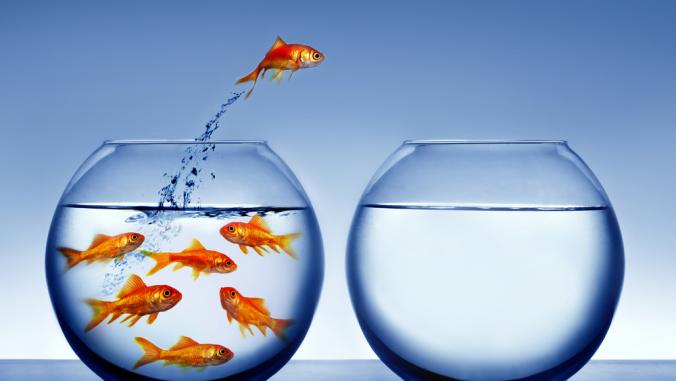The Revolution in the Laundry Room
<p>Over the past several years, the look of the laundry detergent aisle of your supermarket has completely changed, driven largely by Method, and followed by the sector's biggest players.</p>

I've joined the laundry-detergent revolution. Well, revolution may be stretching it -- but changes unfolding (sorry!) in laundry rooms across America show how innovation can move us closer to a sustainable economy.
The revolution metaphor is useful because it's a reminder that real innovation is more likely to be driven by upstarts, insurgents and rebels -- like Method, one of my favorite companies -- than by powerful incumbents who want to preserve the status quo.
Take a look:
Over the last several years, big, wasteful jugs of laundry detergent like this one from Procter & Gamble's Tide have all but disappeared from grocery store shelves. These jugs were good for marketing people who plastered messages on the package but they weren't good for anyone else.
Today, the new normal is concentrated 2x (meaning half the liquid in every load) detergents like Unilever's Small and Mighty All, which use less packaging and water, saving money on shipping costs and waste. Tide sells lots of 2x as well.. The 2x packages are convenient, easy to store and pour. 
But the greenest, smartest and most innovative detergent is an 8x concentrate from Method, which uses less water in a smaller package and should save consumers money. This is good for everyone except news P&G or Unilever, which have profited from the overdosing of laundry, as we'll explain.
Method is a privately-held company that was started in 2000 by Adam Lowry, a former climate scientist, and his friend Eric Ryan in their San Francisco bachelor pad. It has grown into a company with more than $100 million in revenues, and an impact bigger than its size. Method introduced the first concentrated laundry detergent -- a 3x concentrate -- to the mass market back in 2004 through Target. A year or so later, amidst much fanfare, Unilever and Wal-Mart followed with a 2x Small and Mighty All. By most accounts P&G, the king of the detergent shelf with such brands as Tide, Gain and Era, came along later, under pressure from Wal-Mart.
 Adam, who is 35, spoke about Method, innovation and green marketing earlier this month at FORTUNE's Brainstorm Green conference. We caught up the other day by phone to talk about how and why Method has become a sustainability leader.
Adam, who is 35, spoke about Method, innovation and green marketing earlier this month at FORTUNE's Brainstorm Green conference. We caught up the other day by phone to talk about how and why Method has become a sustainability leader.
There's a tension, Adam argues, between size and innovation. "When you think about companies that dominate our economy, these are not organizations that welcome change and they are not usually nimble organizations," he says. "The general model, for big companies, is to design something, build a patent fortress around it, and then extract as much profit as you can until the product runs its course."
"Market leaders thrive when markets are static," he adds.
Pushing towards sustainable models requires just the opposite -- persistent innovation. "We need to be willing to take what makes us money today and throw it out the window and replace it with something that's better, greener and a lot less certain," he says.
This restless desire to improve led to the path-breaking 8x product, which packs enough detergent to do 50 loads of wash into a 20 fluid oz bottle that sells for $15 at Method's website, at Amazon or at major retailers including Costco, Target and Wal-Mart. There's a $2 off coupon, as I write this, at the Method site.)
Comparing Method's price to a conventional detergent is tricky because, Adam argues, the conventional guys encourage waste.
He calls its laundry's dirty secret:
The laundry jug is the SUV of consumer products -- it's antiquated, wasteful, and costly, but supremely profitable for its makers.
Why? Because caps on conventional containers of detergent are often twice the size of the recommended dose and the "fill to here" lines are hard to see. Method did a study that found that more than half of consumers either fill the cap full or eyeball the amount needed. Using too much detergent is bad for clothes which get worn out more quickly, bad for washers that get gunked up, bad for the environment because more laundry soap flows into waterways and bad for the wallets of customers who buy more than they need.
It's good only for the manufacturers who sell between $3-billion and $4-billion of detergent a year. As Adam writes:
If a third of that is pure waste, one could assume that detergent manufacturers make $1 billion a year on consumers overusing laundry detergent. It's clearly not that the technology to make caps less wasteful and easier to use has eluded detergent manufacturers all these years. They have a billion little reasons not to find a solution.
By contrast, Method's 8x product works with small pump that prevents overdosing by delivering a little squirt into the washer. I've been using it for a couple of months, and it's easier and more fun that pouring blue liquid into a cap. You can learn a lot more about the product here.
Interestingly, while the website touts the environmental benefits of 8x detergent ("our product uses drastically less water, 36% less plastic and requires 33% less energy and oil to produce than widely available 2x detergent"), Method is as well known for its stylish designs as for its green cred. "I think it's a mistake to market yourself as green," Adam says, in part because eventually all products will have to be green.
{related_content}While Method is still a small company, it's gotten the attention of the big guys. Clorox, which has a GreenWorks laundry product, has accused Method of infringing on the image of a yellow daisy that both companies use on their packages. Method's having some fun with the accusation, setting up a website called votedaisy.com that asks consumers to vote on who owns the daisy -- Method, Clorox or Mother Nature. You can watch Adam on video here.
When I called P&G to ask whether they were developing an 8x detergent product, Len Sauers, the firm's amiable head of sustainability, told me the company doesn't talk about future products. He did say that P&G sells a laundry detergent in Europe called Ariel Excel Gel which uses cold water is compacted more than any laundry soap sold in the U.S.
"As a sustainability guy, I'm a big fan of compaction," Len said. But as the industry leader, he noted, P&G needs to make cure its mass customer base is ready for change. "We target mainstream consumers, those who want to do the right thing and don't want tradeoffs," he told me.
Of course, as best as I can tell, there aren't any tradeoffs with the 8x product, though it may be a hard sell to consumers who don't expect to pay $15 for something that comes in a small package.
Adam, by the way, has nothing against P&G. "P&G is an amazing company," he says. "Every year they grow their earnings. But they follow a certain formula. And we want to challenge that formula."
Spoken like a true revolutionary.
GreenBiz.com Senior Writer Marc Gunther is a longtime journalist and speaker whose focus is business and sustainability. Marc maintains a blog at MarcGunther.com. You can follow him on Twitter @marcGunther.
Supermarket photo CC-licensed by Flickr user Thomas Hawk.

